Reviews
Tri-Curious? You May Love the Funky, Spunky New Folkestone Triennial Art Show
Artists including David Shrigley, Lubaina Himid, and Sol Calero are taking over the British coastal town.
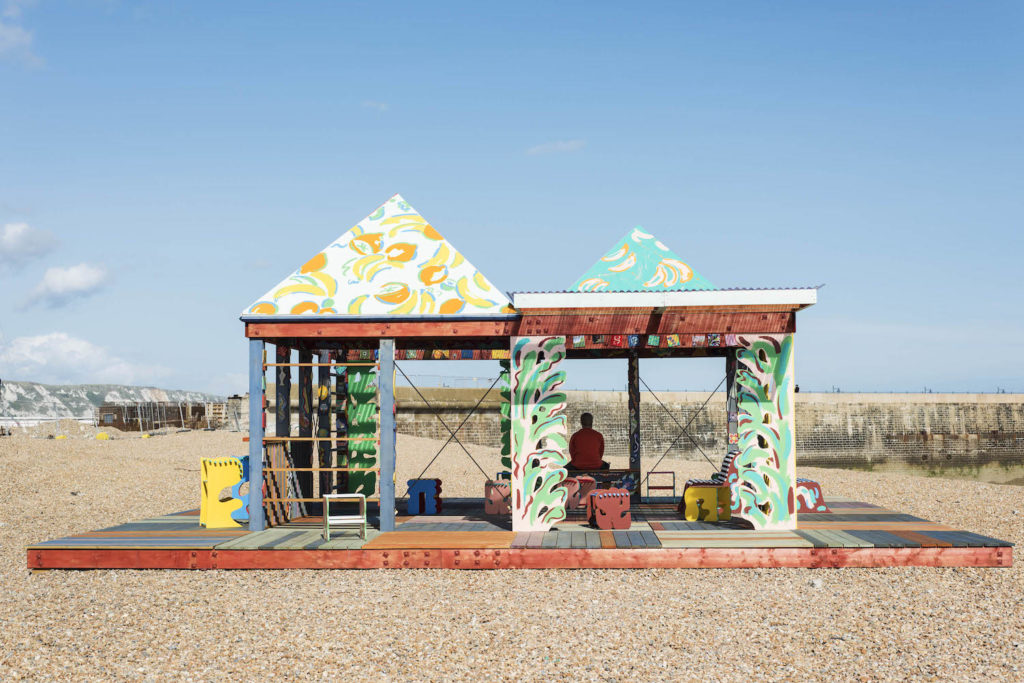
Artists including David Shrigley, Lubaina Himid, and Sol Calero are taking over the British coastal town.

Hettie Judah

Seaside resort views don’t get much better than the outlook from The Leas at Folkestone’s cliff-top, with the wide, milky green bay sparkling through fuzzy clouds of dark pine tops, artfully tormented over decades by the coastal wind. Whether art fanatic or merely tri-curious, a sunny day in the UK’s coastal town of Folkestone tracking down commissions from this Triennial and its predecessors is pretty joyous.
As the #touristgohome protests in Barcelona, Venice, and Amsterdam this summer have communicated, forcefully, beautiful holiday spots present a different face to those who inhabit them full time, and tourism comes with its challenges. Part of Folkestone’s response has been the nurturing of a Creative Quarter, and initiatives like the Triennial, aimed at residents and blow-ins alike.
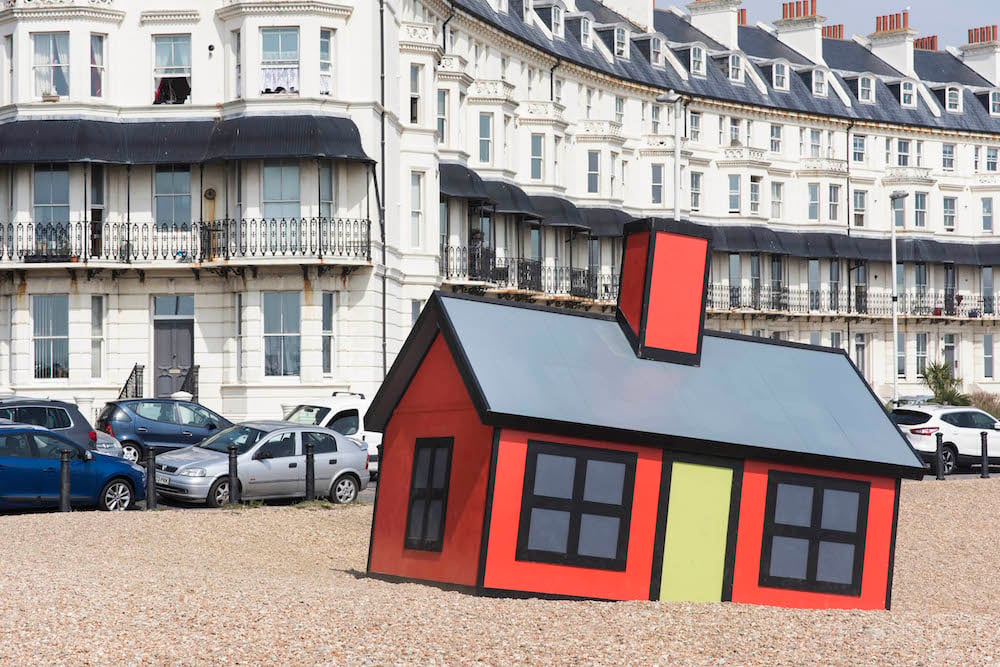
Richard Woods, Holiday Home. Commissioned by the Creative Foundation for Folkestone Triennial 2017. Photo Thierry Bal.
To start with, I pff’d and tsk’d at Richard Woods’s Holiday Home: six Nikelodeon-bright buildings of Wendy house proportions positioned at improbable sites around town, and one of this year’s most visible commissions. There’s a lot going on beneath their aesthetic blockiness, and after a few sightings—tilted on a city-centre roundabout, perched on the perfectly groomed lawn on the lip of the cliff opposite grand stuccoed terraces—it was love at third sight.
Like budget-conscious Airbnb guests, the Homes are so dogged in their search for holiday destinations that they’d settle in basins of subsiding pebbles on the beach, hang off a pile of rocks on the coastal edge, or even float on a platform in the bay. They offer a reminder of how squeezed this town might feel, between its eroding coastline and frontline status in Britain’s highly politicized migration story. For cities within easy reach of London too, the weekend homes of wealthy city-dwellers raise property prices, and leave buildings empty weeklong. These Holiday Homes may look cartoonish, but all kinds of turmoil lurk within, neatly in keeping with the Triennial’s title: “double edge.”
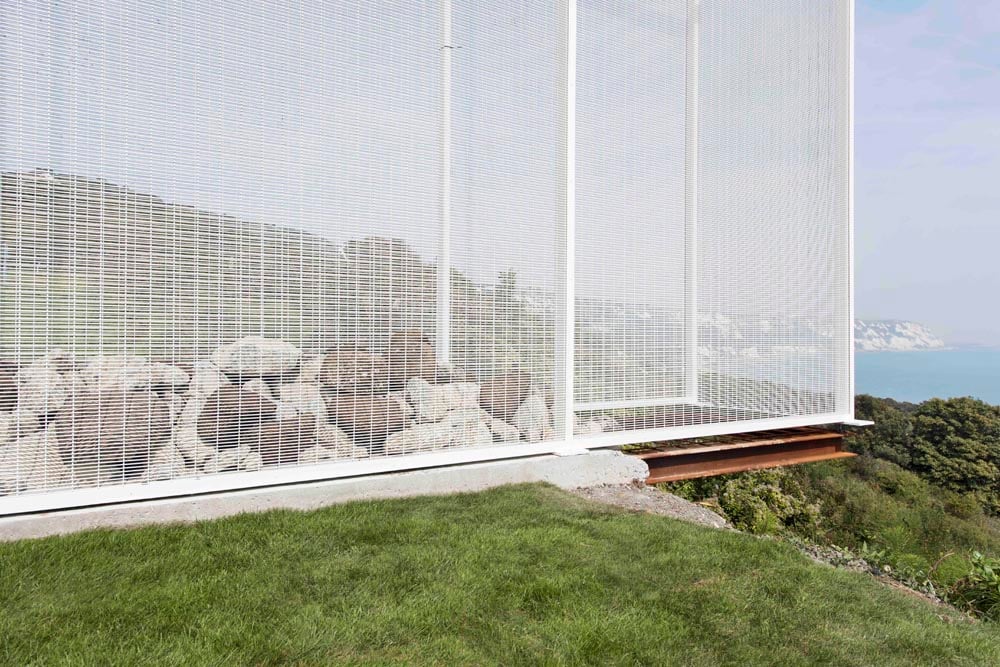
Alex Hartley, Wall. Commissioned by the Creative Foundation for Folkestone Triennial 2017. Photo Thierry Bal.
As the cliff rears upward on the route north out of town, Alex Hartley’s Wall balances perilously on the edge, held steady by a counterweight of rocky ballast within, like a brutal, geological reimagining of The Italian Job.
Wall touches issues of both erosion and migration in a rather more forthright way: its framework is constructed of the doubled mesh fencing used in the Jungle camp at Calais, and the rubble is formed of querns, locally excavated Iron age millstones. In time, erosion will tip the artwork over the edge of the cliff.
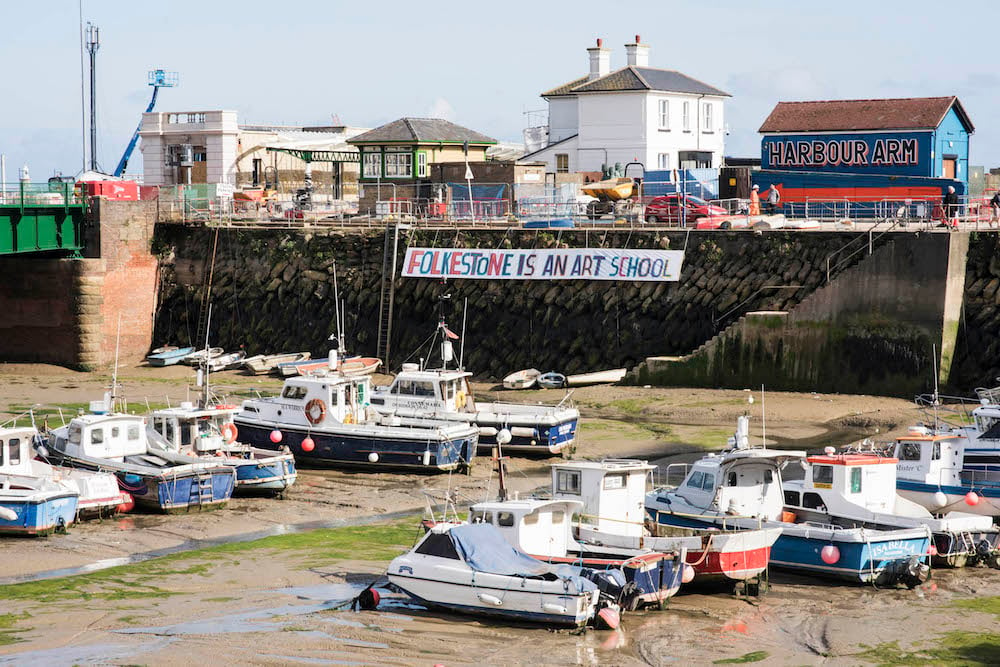
Bob and Roberta Smith, FOLKESTONE IS AN ART SCHOOL. Commissioned by the Creative Foundation for Folkestone Triennial 2017. Photo Thierry Bal.
Vying for attention with Holiday Home is Bob and Roberta Smith’s FOLKESTONE IS AN ARTSCHOOL, a slogan now plastered all over town, from the billboard outside the station and banners on the high street, to the East Cliff Martello Tower, a plump coastal fort that now defends a small golf course. Bob and Roberta Smith has not created an art school in Folkestone: he has proclaimed the entire city to be one.
Sure, Joseph Beuys may have said that “Everyone is an artist,” but did he ever produce a viability study? I think not. After some exploratory research, Bob and Roberta Smith found that all the human, physical, and intellectual resources required for an art school were indeed already in place, and has provided a directory and a teaching program to activate them.
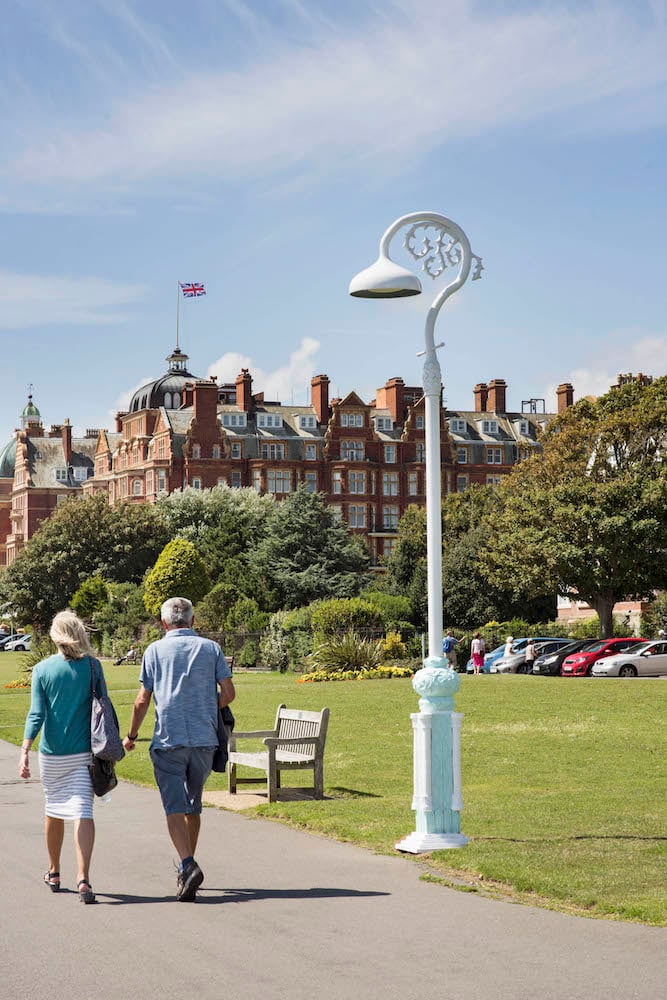
David Shrigley, Lamp Post (as remembered). Commissioned by the Creative Foundation for Folkestone Triennial 2017. Photo Thierry Bal.
Two particularly appealing objects—Lubaina Himid’s Jelly Mould Pavilion and David Shrigley’s Lamp Post (as remembered)—look at memory. Himid’s pretty pavilion is based on an early ceramic jelly mould in her collection. Carved within with seashells and decorative flourishes, and supported on twisted Barley-sugar columns, in its scaled-up form it resembles an arabesque folly. The sugar here is both bitter and sweet, holding memory of the slave trade and sugar plantations that furnished the wealth on which glamorous 19th-century coastal resorts like Folkestone were built, and of the Rotunda that once occupied the site of the pavilion, selling candyfloss and toffee apples.
For Lamp Post (as remembered), Shrigley invited an artist friend based in Edinburgh to visit and commit to memory (in 40 seconds) an ornamented lamppost on The Leas. A model made according to her remembered post now stands on duty between the originals—it is shorter, more brightly painted and has somehow acquired a rather Scottish accent, with decorative curlicues of thistle and briar. While the disruptive, playful thinking is familiar Shrigley territory, the method of execution is a departure. It’s a lovely piece, apt for this place of souvenirs.
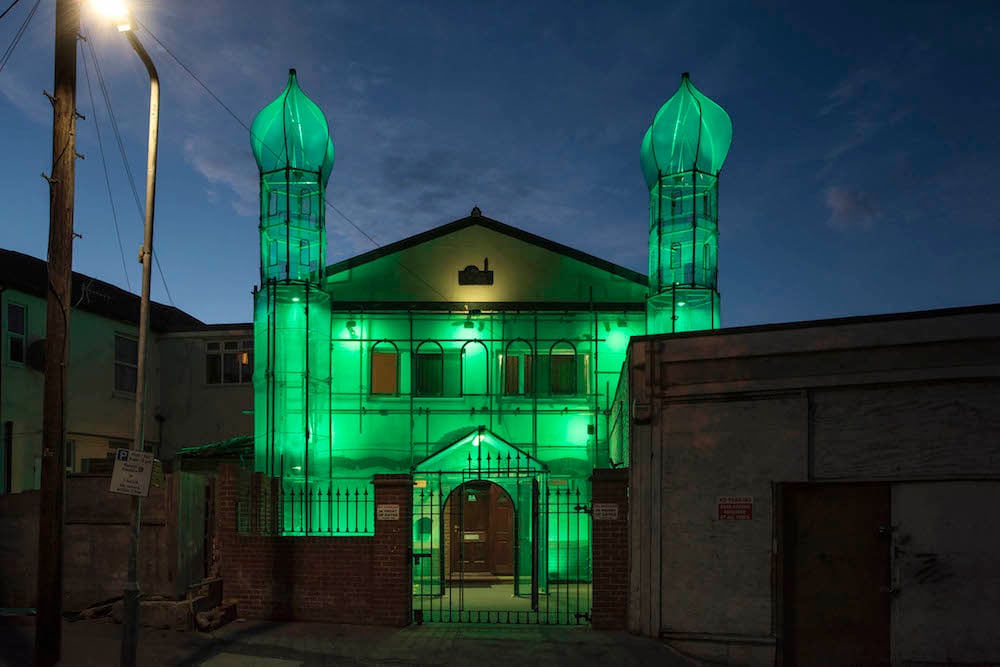
HoyCheong Wong, Minaret. Commissioned by the Creative Foundation for Folkestone Triennial 2017. Photo Thierry Bal.
There is one sound work—composer Emily Peasgood’s Hallfway to Heaven in the Baptist Burial Ground—but otherwise the solid approachability of the Folkestone commissions is a refreshing step away from a world of temperamental multimedia installations and fidgety little sculptural assemblages. In that line, HoyCheong Wong’s Minaret provides a functional and celebratory façade for the Islamic Community Centre that has served as a mosque for local Muslims for 28 years.
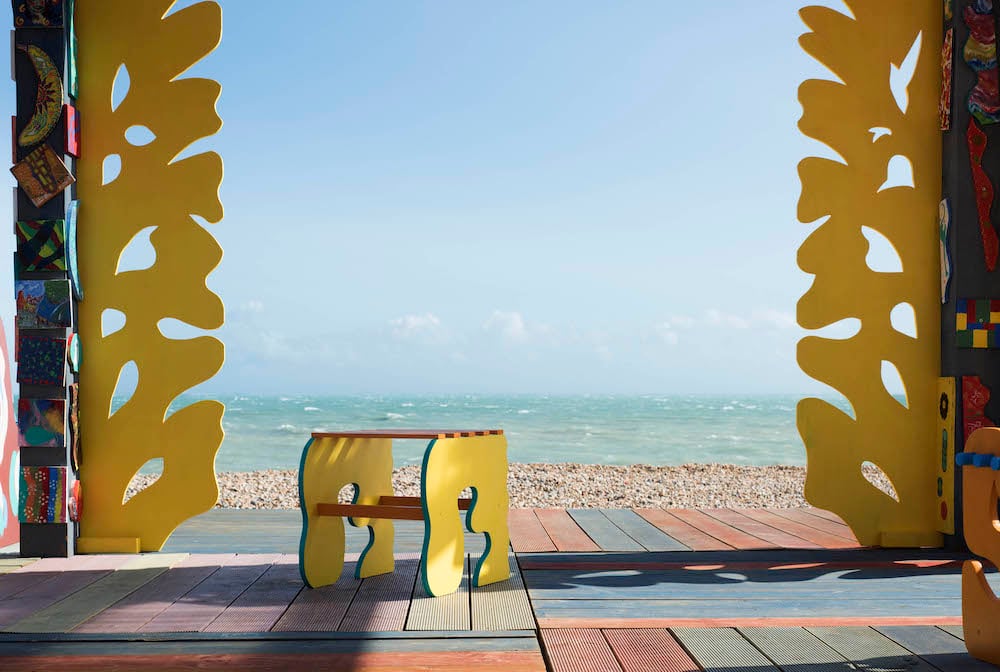
Sol Calero, Casa Anacaona. Commissioned by the Creative Foundation for Folkestone Triennial 2017. Image by Thierry Bal.
I thought a performance was unfolding on Sol Calero’s Casa Anacaona pavilion, but it turned out a rabble of friends with puppies, kids, cricket bats and seaside tattoos had taken it over for the day, just as the artist intended.
There were kids climbing inside the horn of Marc Schmitz and Dolgor Ser-Od’s Siren, a vast slumping trumpet for listening to the sea. Others were gamely trying to disconnect Antony Gormley’s penis from his cast iron figure Another Time XVIII (2013). It seems Folkestone the art school has produced its first generation of home grown critics.
“double edge,” the fourth Folkestone Triennial, runs from September 2 to November 5, 2017.